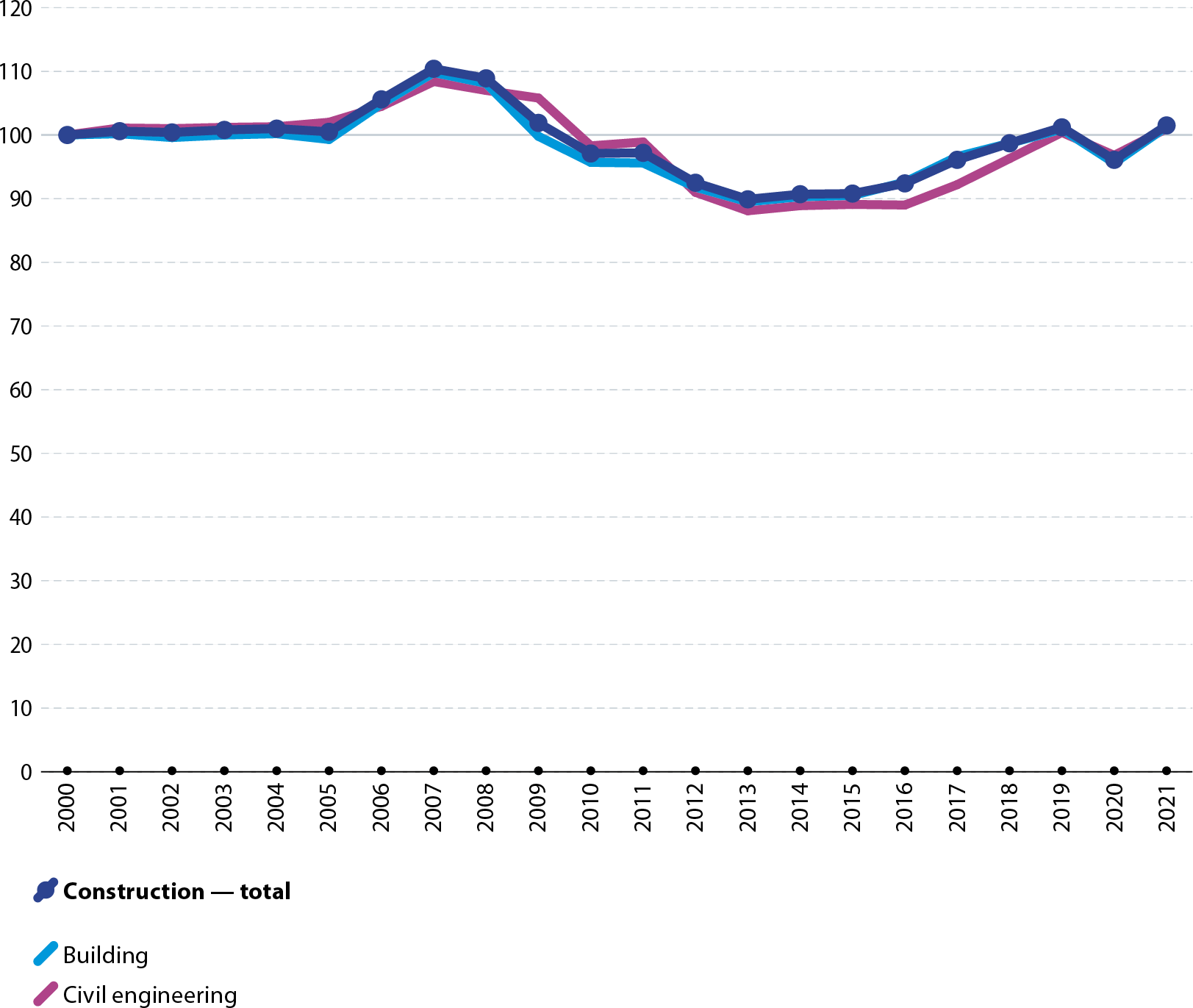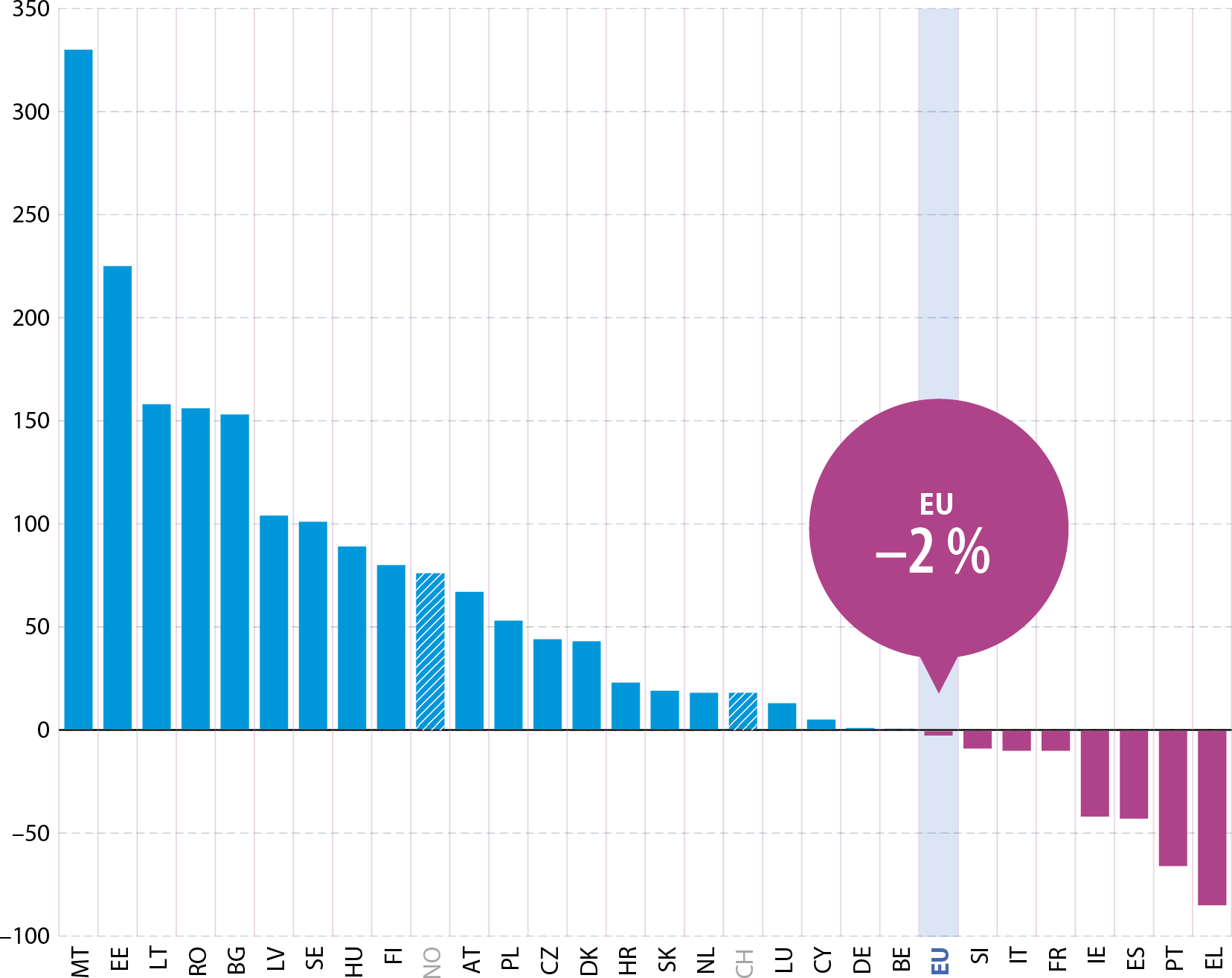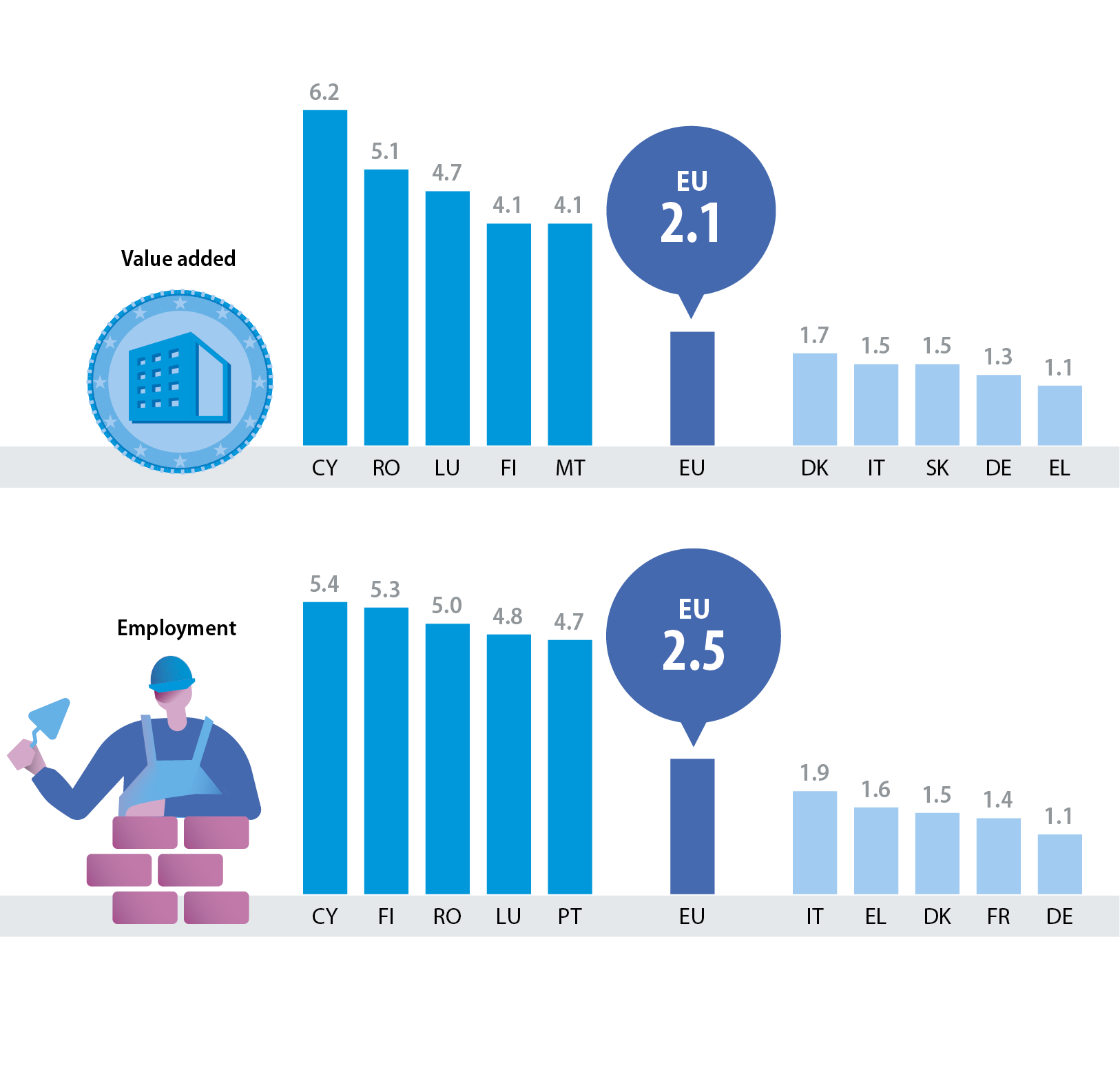Structure
Construction activities include the construction of buildings, civil engineering and specialised construction activities. Across the EU, by far the largest of these three divisions was specialised construction activities: in 2019, these activities accounted for nearly three fifths (59.0 %) of construction value added and for an even higher share of construction employment (63.3 %).

Source: Eurostat (online data code: sbs_na_con_r2)
In all three of the construction divisions, the four largest EU Member States in value added terms were Germany, France, Italy and Spain; the Netherlands was fifth largest in the construction of buildings and in specialised construction activities while Poland was fifth largest in civil engineering. In 2019, Germany had the largest value added for the three construction divisions; France had the second largest value added for civil engineering and specialised construction activities, whereas Spain had the second largest value added for the construction of buildings.
In terms of employment, the five largest EU Member States in all three construction divisions were Germany, Spain, France, Poland and Italy. While Germany was the largest employer for civil engineering and for specialised construction activities, Spain had the largest workforce for the construction of buildings.
Value added specialisation – top five EU Member States (%, share of construction value added, 2019)
A lot of construction is done by enterprises serving a relatively small geographical market, with little international trade compared with many industrial activities. There are nevertheless quite large specialisations in the three construction divisions.
In 2019, over half of construction value added in Cyprus, Romania and Malta resulted from the construction of buildings, approximately double the average for the EU (26.8 %). In Greece, civil engineering contributed more than a third of the construction total and in Latvia and Bulgaria the share was around 30.0 %, also more than double the average for the EU (14.2 %). It was commonplace for specialised construction activities to account for more than half of construction value added: the EU average was 59.0 % and this share was around two thirds in Italy, Denmark, Germany and France.
Note: data are shown for the three NACE Rev. 2 construction divisions.
Source: Eurostat (online data code: sbs_na_con_r2)
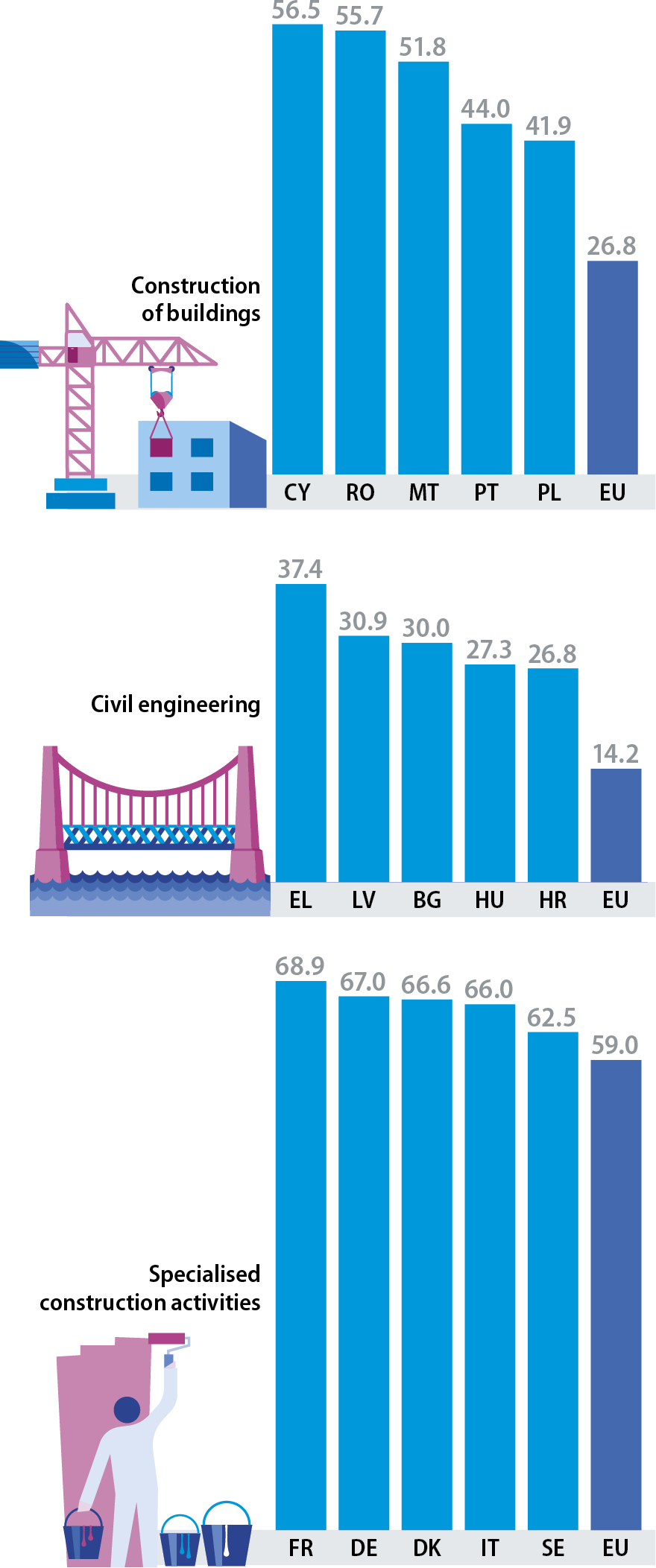
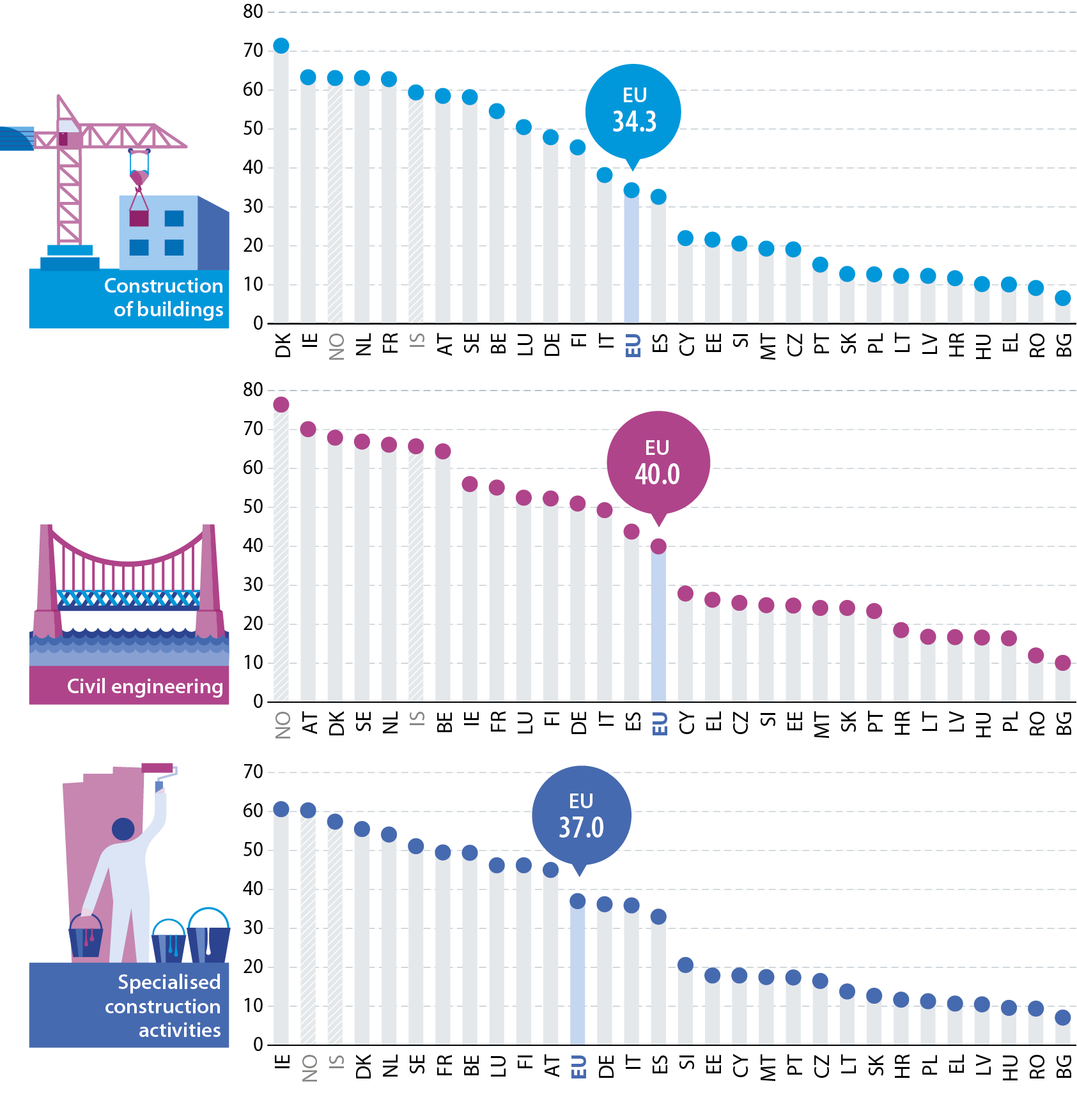
Note: IS, 2018.
Source: Eurostat (online data code: sbs_na_con_r2)
In 2019, average personnel costs across the three divisions of the EU’s construction sector ranged from a high of €40 000 per employee for civil engineering down to €34 300 per employee for the construction of buildings.
In the EU, average personnel costs were lower for the construction of buildings than for the other two construction divisions. However, this situation was only observed in seven EU Member States. In a majority of Member States, the lowest average personnel costs were recorded for specialised construction activities (which dominate the construction sector in the largest Member States). In Ireland, the lowest average personnel costs were for civil engineering, while in Croatia and Slovenia the joint lowest average personnel costs were recorded for specialised construction activities and the construction of buildings.

